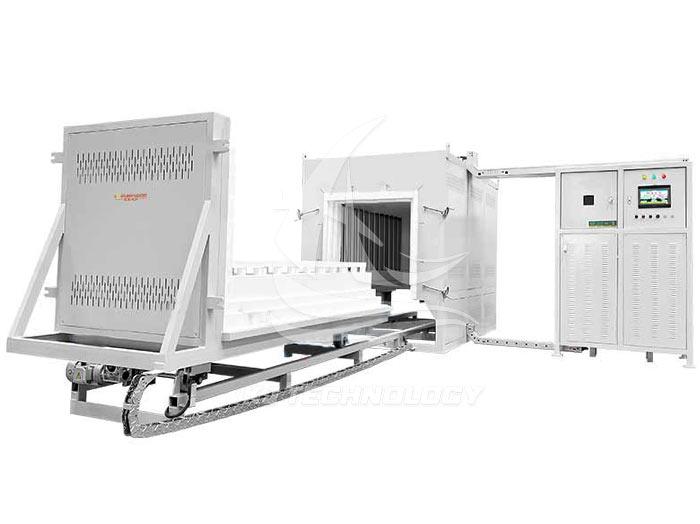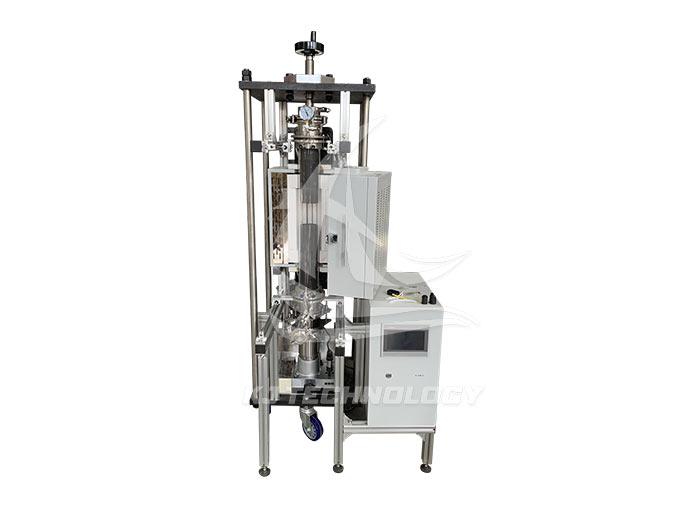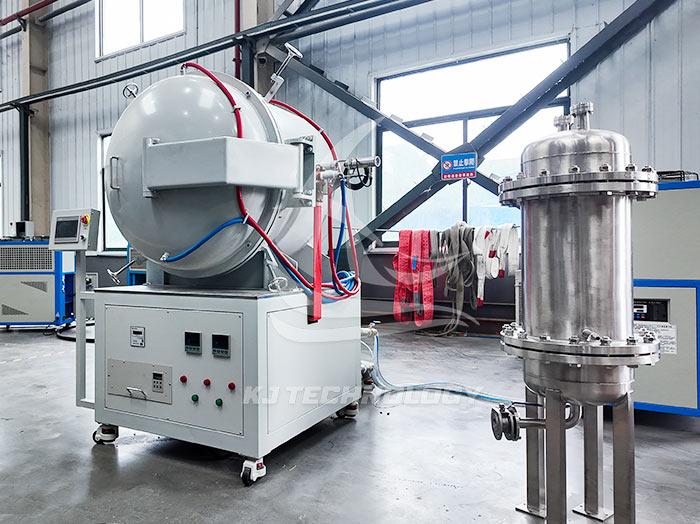Application of Vertical High Vacuum Hot Pressing Furnace in Semiconductor Industry
 08-20-2025 Author: KJ technology
08-20-2025 Author: KJ technology
The vertical high vacuum hot pressing electric furnace is widely and crucially used in the semiconductor industry. Through the synergistic effect of vacuum environment, high-temperature heating, and mechanical pressure, it provides high-precision and high reliability heat treatment solutions for semiconductor manufacturing. The specific application scenarios and advantages are as follows:
1. Core application scenarios
Synthesis and sintering of semiconductor materials
Thin film deposition: In a vacuum environment, dense deposition of metal, oxide or nitride thin films, such as silicon oxide, polycrystalline silicon, etc., can be achieved through hot pressing technology, improving the uniformity and adhesion of the thin film and meeting the high-performance requirements of semiconductor devices for thin film layers.
Ceramic material sintering: used to prepare high-purity and high-density ceramic substrates or packaging materials, such as aluminum nitride, aluminum oxide, etc., by hot pressing to eliminate pores, improve the thermal conductivity and mechanical strength of materials, and ensure the heat dissipation and reliability of semiconductor devices.
Semiconductor device manufacturing
Wafer Annealing: Annealing the wafer in a vacuum environment to eliminate stress generated during the manufacturing process, improve crystal crystallization quality, and enhance the performance and stability of semiconductor devices. For example, by precisely controlling the annealing temperature and time, uniform diffusion and activation of doped atoms can be achieved, optimizing the electrical characteristics of the device.
Metal Interconnection: During the chip packaging process, hot pressing technology is used to achieve densification of the metal interconnect layer, reduce contact resistance, and improve signal transmission efficiency. The vacuum environment can prevent metal oxidation and ensure the reliability of the interconnect layer.
Advanced packaging and 3D integration
Hot press bonding: In the manufacturing of three-dimensional integrated circuits (3D ICs), chips or components of different materials are bonded together through a hot press process to form high-density, high-performance stacked structures. A vacuum environment can avoid bubbles and impurities during the bonding process, improving bonding strength and electrical performance.
Microelectronics packaging: used to prepare highly reliable microelectronic packaging materials, such as ceramic packaging, metal packaging, etc., by using hot pressing technology to improve the density and airtightness of the packaging body, protecting semiconductor devices from environmental influences.
2. Technical advantages
High vacuum environment ensures material purity
The vertical high vacuum hot pressing electric furnace can increase the vacuum degree inside the furnace chamber to 10 ⁻⁵ Pa level, completely isolating active gases such as oxygen and water vapor, preventing semiconductor materials from oxidizing or decomposing at high temperatures, and ensuring the purity and high quality of materials. For example, in the process of metal film deposition, a vacuum environment can prevent surface oxidation of the film, improve its conductivity and adhesion.
Uniform temperature field enhances process stability
Through advanced heating elements and temperature control systems, the vertical high vacuum hot pressing electric furnace can achieve temperature uniformity within ± 1 ℃, avoiding uneven material properties caused by local overheating. For example, during the wafer annealing process, a uniform temperature field can ensure the consistency of the overall performance of the wafer and improve the yield rate.
Controllable pressure promotes material densification
The hydraulic system provides adjustable pressure of 5-100MPa, promoting particle rearrangement and pore elimination, resulting in a semiconductor material density of over 99%. For example, in the sintering process of ceramic materials, pressure assistance can significantly improve the thermal conductivity and mechanical strength of the material, meeting the heat dissipation requirements of high-power semiconductor devices.
Multi functionality and intelligence meet complex needs
Support the introduction of inert gases (such as argon, nitrogen) or reactive gases (such as hydrogen) to achieve specific material modification or reaction. For example, in the process of metal interconnect bonding, introducing hydrogen gas can reduce metal surface oxides and improve bonding quality. At the same time, the PLC control system realizes real-time monitoring and adjustment of process parameters, supports one click start and data storage functions, and improves production stability and repeatability.
3. Typical case
3D integrated circuit bonding
A semiconductor company used a vertical high vacuum hot pressing furnace to achieve copper copper hot pressing bonding of three-dimensional integrated circuits. By optimizing pressure and temperature parameters (such as 400 ℃, 20MPa), the bonding strength was increased by 30% and the contact resistance was reduced by 50%. It was successfully applied in the manufacturing of high-performance computing chips, significantly improving chip performance and integration.
High power device packaging
A certain power semiconductor manufacturer uses a hot pressing electric furnace to prepare aluminum nitride ceramic packaging substrates. By controlling the vacuum degree (10 ⁻³ Pa) and temperature (1800 ℃), the thermal conductivity of the substrate is increased to 170W/(m · K), and the airtightness reaches 10 ⁻⁹ Pa · m ³/s, meeting the high reliability requirements of IGBT modules for electric vehicles.
Advanced thin film deposition
A certain research team used a hot press electric furnace to deposit hafnium based high-k dielectric films in a vacuum environment. By precisely controlling the pressure (10MPa) and temperature (500 ℃), the dielectric constant of the film reached 25 and the leakage current was reduced to 10 ⁻⁹ A/cm ², providing key material support for the development of next-generation memory.








